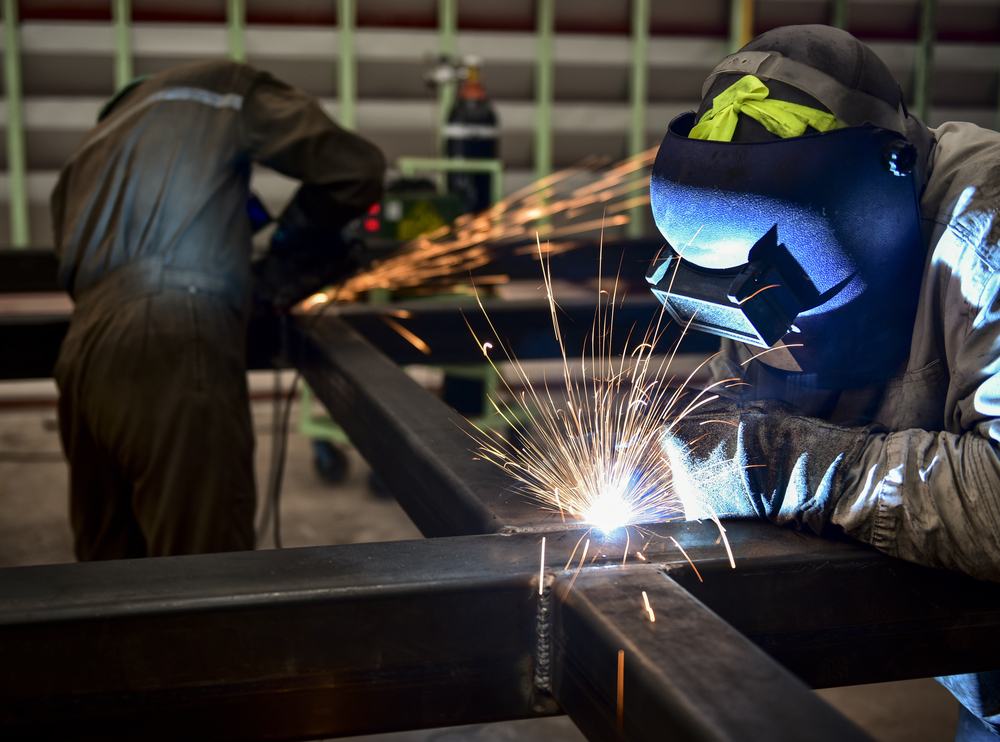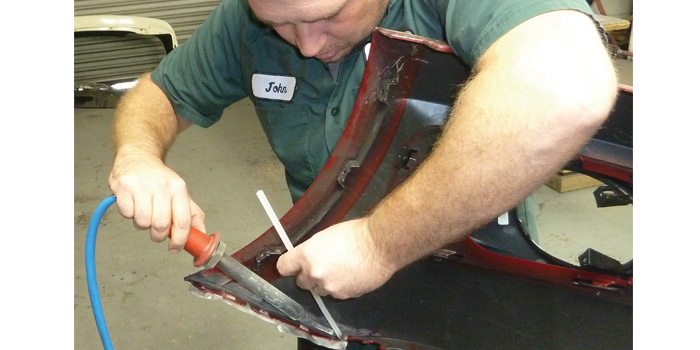Typical Welding Repair Work Issues and Just How to Address Them Successfully
Welding repair work typically come across a series of issues that can threaten the integrity of the end product. Typical troubles consist of poor penetration, porosity, and misalignment, among others. Each problem presents distinct difficulties that call for details approaches for resolution. Comprehending these problems is necessary for welders intending to enhance their end results and skills. This conversation will certainly explore these common welding repair service issues and efficient techniques to address them.
Poor Penetration
Insufficient infiltration takes place when the weld metal fails to totally fuse with the base material, causing weak joints and potential structural failings. This problem typically stems from not enough warmth input, incorrect electrode angle, or inappropriate welding speed. Welders may come across poor infiltration as a result of a miscalculation of the needed criteria for a specific product thickness or kind. In addition, contamination on the base product's surface can hinder effective bonding, exacerbating the issue. To address inadequate infiltration, welders must ensure suitable settings on their tools and keep a tidy job surface area. Routine assessment of welds is recommended to identify any kind of shortages early, allowing for prompt adjustments and the avoidance of jeopardized structural integrity in welded settings up.
Porosity
Porosity is an usual defect in bonded joints that shows up as little gas bubbles entraped within the weld metal. This flaw can jeopardize the integrity of the weld, leading to lowered stamina and potential failing under stress and anxiety. Welding. Porosity normally develops from contamination, dampness, or improper welding techniques, which permit gases to get away into the molten weld pool. To attend to porosity, welders ought to guarantee correct surface prep work, preserve a clean functioning environment, and use ideal welding criteria. Additionally, selecting the ideal filler material and securing gas can alleviate gas entrapment. Normal inspection and screening of welds can help identify porosity early, assuring prompt restorative actions are taken, thus maintaining the quality and integrity of the welded structure
Misalignment
Imbalance in welding can arise from numerous variables, including inappropriate configuration and thermal expansion. Recognizing the root triggers is crucial for effective resolution. A number of correction methods are available to realign components and guarantee architectural integrity.
Reasons of Imbalance
Welding misalignment typically originates from a range of underlying issues that can jeopardize architectural honesty. One key reason is improper fit-up of elements before welding, which can result in gaps and uneven surfaces. Variations in thermal expansion throughout the welding procedure can also result in distortion, specifically if the materials being signed up with have different coefficients of expansion. Additionally, insufficient securing and fixturing may stop working to hold parts firmly in area, resulting in motion throughout welding. Poorly maintained tools, including welding machines and devices, may present inconsistencies in the weld grain, additional adding to misalignment. Ultimately, operator mistake, stemming from insufficient training or experience, can additionally play a considerable role in developing misaligned welds.
Correction Techniques Available
Attending to misalignment efficiently needs a combination of corrective strategies customized to the details issues handy. One typical approach is the use of jigs or fixtures to hold elements in the correct position throughout welding, ensuring consistent placement. Furthermore, pre-heating the products can aid lower distortion and improve fit-up. For substantial misalignment, mechanical adjustment methods, such as making use of hydraulic jacks or clamps, can be employed to correct the position before welding. Post-weld heat treatment might additionally be necessary to eliminate tensions triggered by imbalance. Ultimately, careful assessment and adjustment throughout the setup phase can stop imbalance issues from becoming considerable problems, advertising a smoother welding process and improving general structural honesty.
Distortion
Distortion is an usual challenge in welding that can arise from different elements, consisting of unequal heating and air conditioning. Recognizing the root causes of distortion is essential for executing effective prevention methods. Addressing this issue not just boosts architectural integrity however also boosts the total high quality of the weld.
Reasons of Distortion
When based on the intense warm of welding, products typically undertake adjustments that can bring about distortion. This phenomenon mostly arises from thermal growth and contraction during the welding procedure. As the weld area heats up, the material broadens; upon air conditioning, it gets, which can produce internal stresses. On top of that, unequal heating throughout a workpiece can worsen these anxieties, leading to bending or flexing. The sort of product likewise plays a substantial duty; metals with differing thermal conductivity and coefficients of development might respond in different ways, bring about unforeseeable distortions. Inadequate joint layout and inadequate fixturing can contribute to imbalance throughout welding, raising the likelihood of distortion. Comprehending these reasons is important for reliable welding repair service and avoidance strategies.
Avoidance Techniques
Efficient prevention strategies for distortion throughout welding focus on managing warmth input and making certain appropriate joint design. Maintaining a consistent heat input helps to decrease thermal expansion and tightening, which can bring about distortion. Making use of strategies such as pre-heating the work surface can likewise lower the temperature level slope, promoting uniform home heating. Furthermore, selecting suitable joint styles, such as T-joints or lap joints, can boost security and reduce tension concentrations. Carrying out appropriate fixturing to secure the work surfaces in place further aids in keeping placement throughout the welding process. Staggered welding series can distribute warmth extra evenly, welders for sale near me stopping localized distortion. By using these methods, welders can substantially lower the chance of distortion and improve the total high quality of their welds.
Breaking
Breaking is a common issue encountered in welding repair services, frequently resulting from numerous variables such as inappropriate cooling rates, material option, or inadequate joint preparation. The incident of cracks can significantly endanger the stability of the weld, bring about possible failings during procedure. To resolve this problem, welders have to first assess the origin causes, making certain that products work and suitably picked for the particular application. In addition, controlling the cooling rate throughout the welding process is important; quick air conditioning can induce stress and result in cracking. Appropriate joint layout and preparation likewise add to lessening the danger. Applying these strategies can boost weld top quality and durability, inevitably lowering the probability of breaking in finished weldments.

Incomplete Combination
A substantial issue in welding repair services is incomplete fusion, which occurs when the weld metal does not effectively bond with the base material or previous weld passes - Montana Mobile Welding and Repair Fabrication. This defect can lead to weaknesses in the joint, possibly jeopardizing the stability of the welded structure. Elements contributing to insufficient blend include inadequate warmth input, improper welding method, and contamination of the surface areas being signed up with. To address this issue successfully, welders must guarantee proper pre-weld cleansing and surface area preparation, along with readjust their welding specifications to accomplish ample penetration and fusion. Routine assessment throughout the welding process can additionally help determine insufficient blend early, enabling timely restorative actions to enhance the total quality of the weld
Overheating
While welding repairs can enhance architectural integrity, overheating provides a significant challenge that can cause material destruction. Extreme warmth throughout welding can modify the mechanical residential or commercial properties of metals, leading to lowered strength, boosted brittleness, and bending. This phenomenon is particularly critical in high-stress applications where architectural integrity is vital. Recognizing overheating can involve aesthetic assessments for staining or distortion, along with keeping track of temperature during the welding procedure. To alleviate the risks connected with getting too hot, welders should employ ideal strategies, such as managing warmth input, changing travel rate, and utilizing suitable filler materials. Furthermore, executing pre- and post-weld heat treatments can aid bring back material buildings and improve the overall quality of the repair service, guaranteeing lasting efficiency and safety.
Regularly Asked Questions
What Are the Common Indicators of a Welding Problem?

How Can I Check My Welds for Top quality?
To examine welds for quality, one can use visual evaluations, ultrasonic testing, and radiographic approaches. Each strategy assures architectural stability, identifies problems, and confirms adherence to defined standards, eventually enhancing the dependability of the bonded joints.
What Safety and security Safety Measures Should I Take While Welding?
When welding, one should focus on safety by using proper individual protective devices, making certain correct ventilation, securing combustible products away, maintaining a clean work space, and understanding surroundings to avoid injuries and crashes.
Can I Repair a Weld Without Remodeling the Entire Joint?
Repairing a weld without redesigning the whole joint is possible, depending on the damage (Belgrade Welding). Techniques such as grinding, adding filler product, or utilizing a welding procedure can successfully attend to details problems while protecting the bordering framework
What Devices Are Important for Reliable Welding Repair Works?
Important tools for reliable welding repairs include a welding equipment, wire brush, mill, protective gear, clamps, and filler materials. Each tool plays an essential role in ensuring high quality and safety and security during the repair service process. Porosity commonly emerges from contamination, moisture, or improper welding techniques, which enable gases to escape into the molten weld swimming pool. Badly kept devices, consisting of welding equipments and aluminum welding wire devices, may introduce incongruities in the weld bead, further adding to imbalance. When subjected to the intense heat of welding, materials usually undergo modifications that can lead to distortion. Fracturing is a common issue encountered in welding repairs, often resulting from different factors such as incorrect cooling prices, product option, or inadequate joint preparation. A considerable problem in welding fixings is insufficient blend, which occurs when the weld steel does not adequately bond with the base product or previous weld passes.